If you’ve ever struggled to fit all your favorite plants into a small garden, patio, or balcony, vertical tomato growing might be the perfect solution. Instead of sprawling across the ground and taking up valuable space, tomato plants can be trained to grow upward—yielding healthier fruit, fewer pests, and easier harvesting.
Growing tomatoes vertically isn’t just for small gardens. Even gardeners with ample space are embracing this method because it improves air circulation, reduces disease, and boosts productivity. Whether you’re growing in containers or garden beds, this guide will show you how to grow tomatoes vertically to save space and increase yield.
Why Grow Tomatoes Vertically?
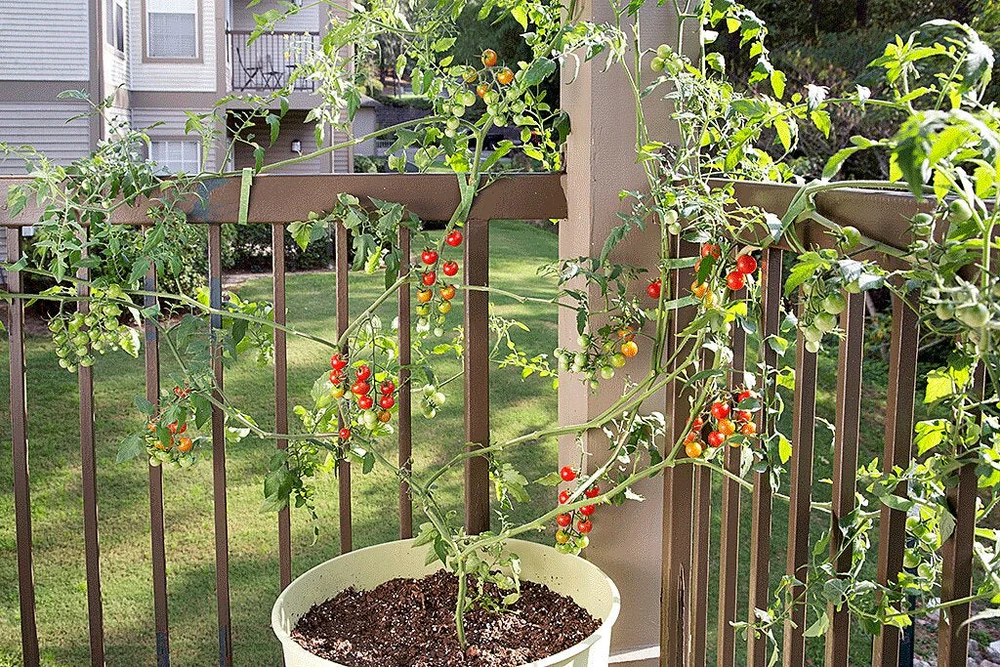
Before diving into the how-to, let’s look at why vertical tomato growing has become so popular:
- Saves Space: Ideal for small gardens, patios, or balconies where horizontal space is limited.
- Improves Air Circulation: Reduces the risk of fungal diseases like blight and mildew.
- Simplifies Harvesting: Fruits are easier to see and pick without bending or crawling.
- Reduces Pest Problems: Keeps fruit off the soil, deterring slugs and rot.
- Encourages Stronger Stems: Vertical training promotes healthier growth and larger yields.
- Cleaner Fruit: Tomatoes stay free of soil splashes and debris.
Now let’s explore how to do it successfully.
Step 1: Choose the Right Tomato Variety
Not all tomato varieties perform equally well when grown vertically.
Best choices:
- Indeterminate varieties (vining types): These grow tall and continuously produce fruit throughout the season.
Examples: Better Boy, Sungold, Sweet Million, Cherokee Purple, Big Beef. - Avoid determinate (bush) varieties: They grow to a set height and stop producing once they’ve reached maturity, making them less ideal for vertical systems.
If space is very limited or you’re growing on a balcony, choose a compact indeterminate like Gardener’s Delight or Tumbler.
Step 2: Pick Your Vertical Growing System
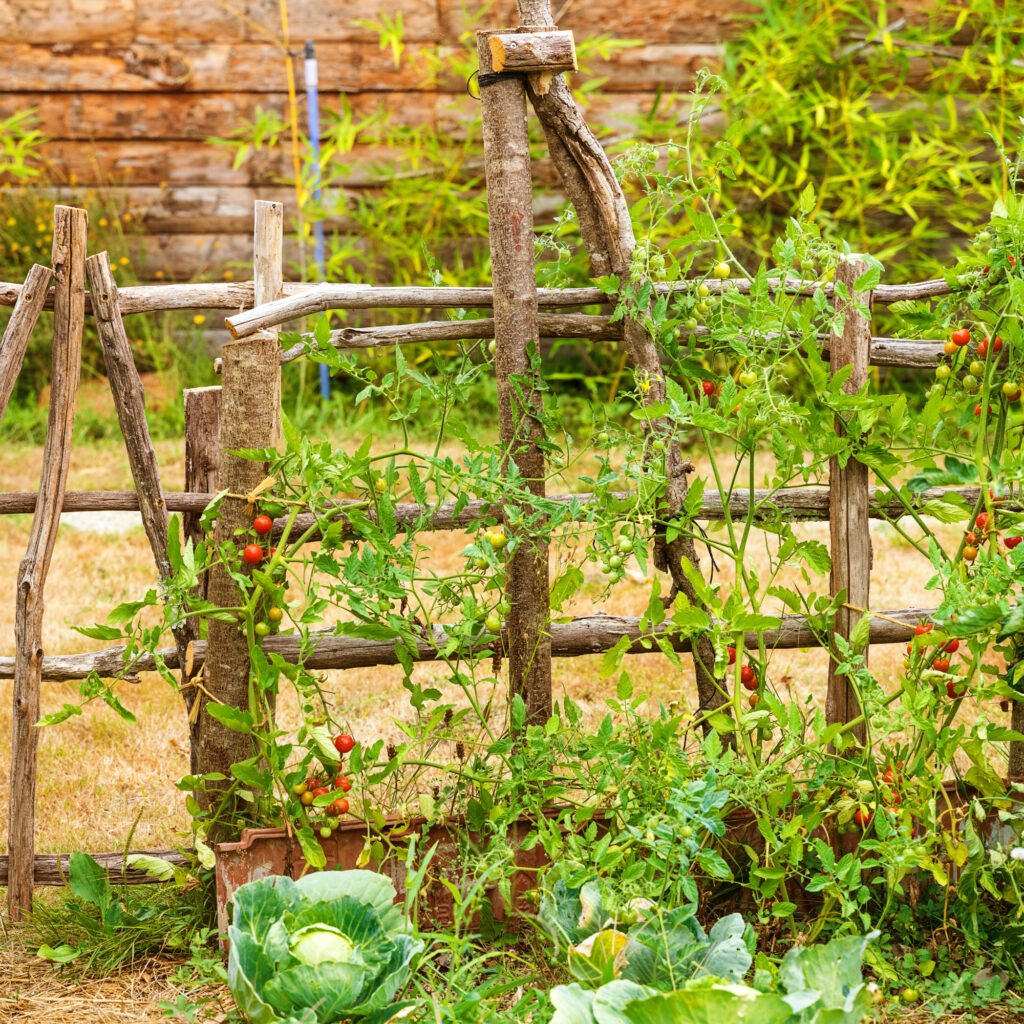
There are several effective structures you can use depending on your space and budget.
1. Stakes
- Simple and inexpensive.
- Drive a 6–8-foot wooden, bamboo, or metal stake 12 inches deep into the ground next to each plant.
- Tie the plant to the stake every 8–10 inches as it grows using soft ties or garden twine.
- Ideal for single plants or small gardens.
2. Cages
- Great for beginner gardeners.
- Use wire tomato cages that are 4–6 feet tall.
- Place cages at planting time to avoid damaging roots later.
- Support the stems inside the cage as they grow.
3. Trellises
- Excellent for multiple plants in a row.
- Construct using wood or metal posts with strong horizontal wires or netting.
- Gently weave stems through the structure as they climb.
- Perfect for raised beds or long garden rows.
4. String Support System
- Popular in greenhouse or indoor setups.
- Tie twine from a high support bar down to the base of each plant.
- Wrap the main stem around the string as it grows.
- Provides excellent airflow and efficient use of space.
Step 3: Prepare the Soil and Plant Properly
Tomatoes love deep, rich, well-draining soil.
Soil preparation:
- Loosen soil 12–18 inches deep.
- Mix in compost or aged manure for nutrients.
- Add a slow-release organic fertilizer (such as 5-5-5 NPK).
Planting tips:
- Plant seedlings deep—bury two-thirds of the stem. This encourages strong root growth along the buried portion.
- Space plants about 18–24 inches apart if using stakes or strings, and 2–3 feet apart if using cages.
Deep planting and proper spacing ensure that your vertical system can handle healthy, tall plants without overcrowding.
Step 4: Train and Prune Regularly
Training your tomatoes to grow vertically requires some ongoing attention.
Training technique:
- Once plants reach 10–12 inches tall, begin tying them loosely to the support.
- Always tie just below a leaf node to prevent stem breakage.
- Check every few days to guide new growth upward.
Pruning essentials:
- Remove suckers—the small shoots that grow between the main stem and leaf branches. These divert energy from fruit production and cause overcrowding.
- Keep the lower 12 inches of the plant free of leaves to improve airflow and prevent soil splash.
- Limit each plant to one or two main stems for best results.
Regular pruning keeps plants manageable, improves fruit size, and prevents disease.
Step 5: Water and Feed Consistently
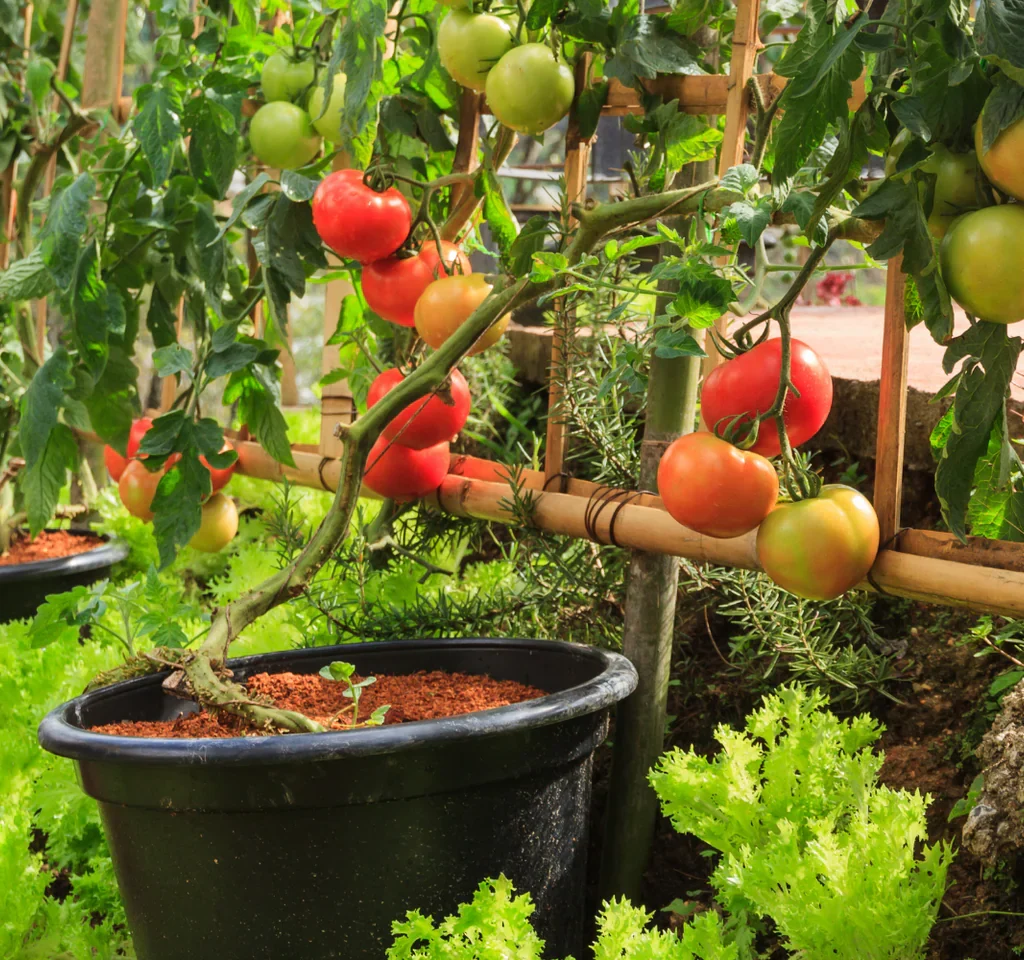
Vertical tomatoes depend heavily on consistent watering and nutrition.
Watering tips:
- Water deeply at the base of the plant 2–3 times per week, depending on weather.
- Avoid overhead watering to keep leaves dry and reduce fungal issues.
- Apply mulch (like straw or shredded leaves) around the base to retain moisture.
Feeding:
- Feed every 2–3 weeks with an organic liquid fertilizer such as fish emulsion or compost tea.
- During fruiting, switch to a low-nitrogen fertilizer to encourage more fruit and fewer leaves.
Pro Tip: Irregular watering causes blossom end rot, a common issue in container-grown tomatoes. Maintain steady moisture levels.
Step 6: Support Heavy Fruit Clusters
As tomatoes develop, the weight of the fruit can strain stems. Prevent breakage by:
- Adding extra ties below large clusters.
- Using soft cloth or elastic plant ties to avoid damaging stems.
- For trellised plants, use mesh netting to cradle the fruit gently.
If you’re growing large varieties like Beefsteak, be extra vigilant about providing strong, sturdy support.
Step 7: Manage Pests and Diseases Naturally
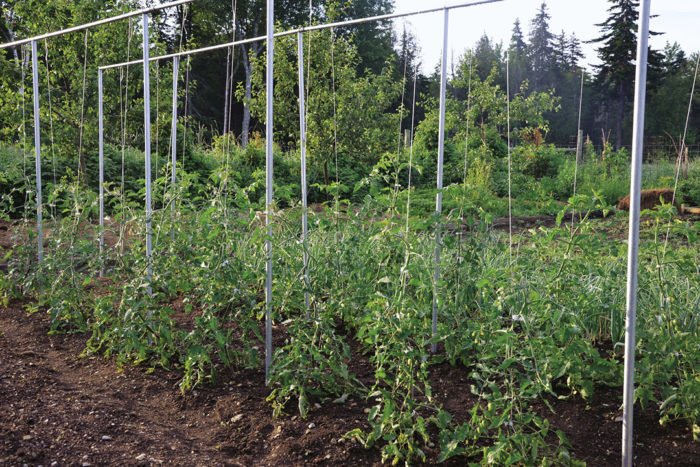
Growing vertically already helps minimize pest problems, but some vigilance is still necessary.
Natural control tips:
- Inspect leaves regularly for aphids, whiteflies, and hornworms.
- Spray neem oil or insecticidal soap at first signs of infestation.
- Encourage beneficial insects like ladybugs and lacewings.
- Remove any yellow or diseased leaves promptly.
- Maintain airflow by pruning regularly and spacing plants correctly.
Mulching and bottom watering also help prevent soil-borne diseases like blight and root rot.
Step 8: Harvest and Maintain Your Plants
When fruits begin to ripen, the benefits of vertical growing become clear—you’ll see clusters of tomatoes hanging neatly in view.
Harvesting tips:
- Pick fruits as soon as they reach full color to encourage new growth.
- Use pruning shears or gently twist the fruit off the vine.
- Regular harvesting keeps plants productive and prevents splitting.
As the season progresses, remove lower leaves and dead foliage to keep plants healthy and focused on fruit production.
Bonus: Growing Vertically in Containers
Don’t have a garden bed? You can still grow vertically on a patio or balcony.
Container requirements:
- Minimum size: 18–24 inches deep and wide.
- Use high-quality potting mix with compost added.
- Add a stake, cage, or trellis directly into the pot before planting.
- Water more frequently since containers dry out faster.
Choose compact indeterminate or dwarf varieties that adapt well to smaller spaces, such as Patio Princess or Tiny Tim.
Common Mistakes to Avoid
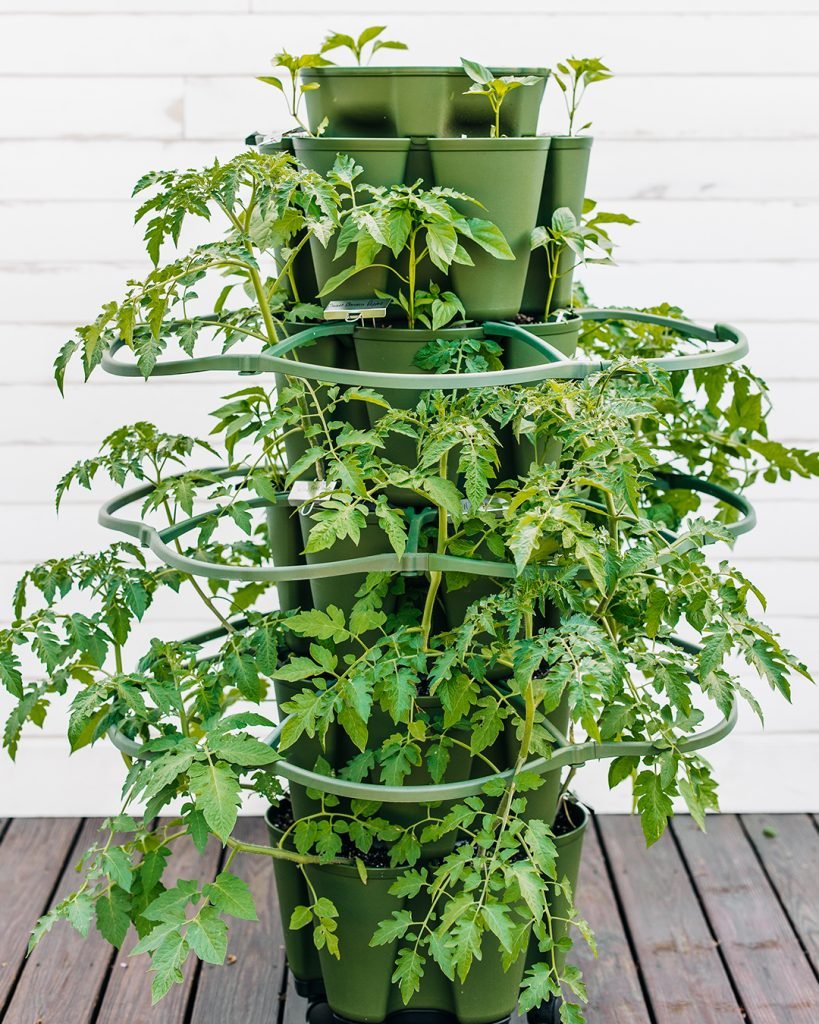
- Using weak supports: Always ensure your stakes or trellises are strong enough for mature plants.
- Tying too tightly: Restricts growth and damages stems.
- Neglecting pruning: Leads to overcrowded, disease-prone plants.
- Inconsistent watering: Causes stress and poor fruit quality.
- Planting too close together: Reduces airflow and invites disease.
A little extra attention early in the season prevents big problems later.
Final Thoughts
Growing tomatoes vertically is one of the smartest ways to make the most of limited space while improving plant health and yield. It transforms messy, sprawling vines into tidy, productive towers of flavor.
With the right structure, regular pruning, and consistent care, you’ll enjoy cleaner fruit, easier harvesting, and healthier plants—all without sacrificing precious garden space.
Whether you’re a balcony gardener or managing a large backyard plot, vertical tomato growing will reward you with beautiful, abundant harvests that make every inch of your garden count.
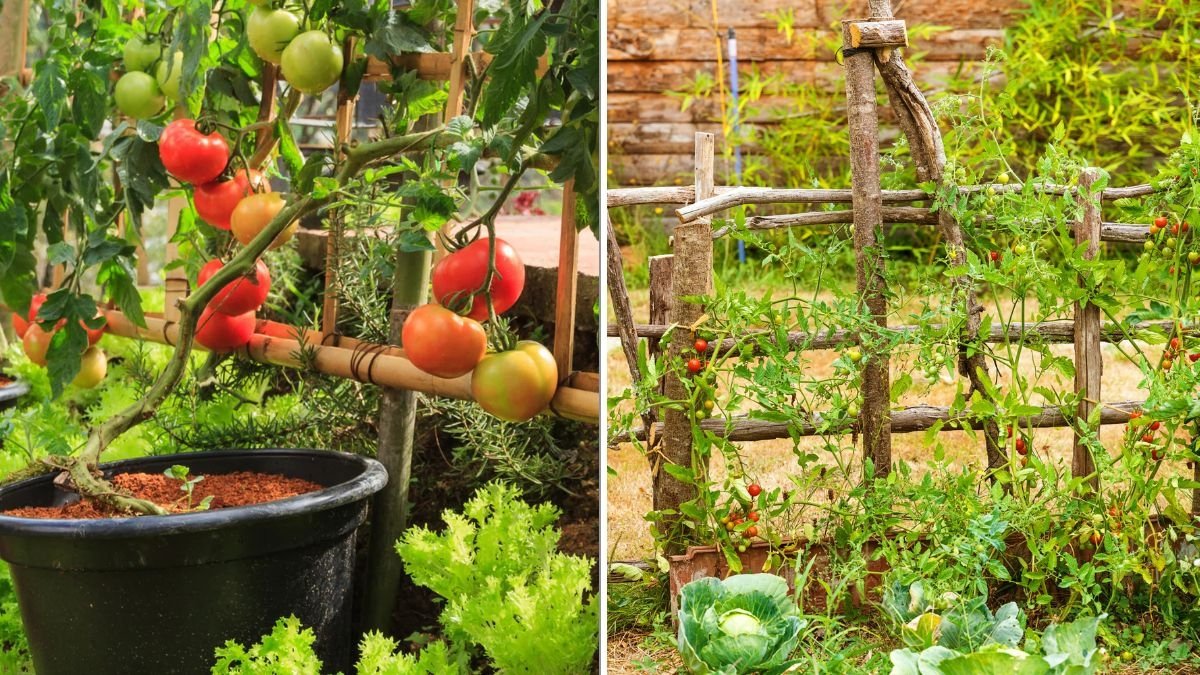





Leave A Comment